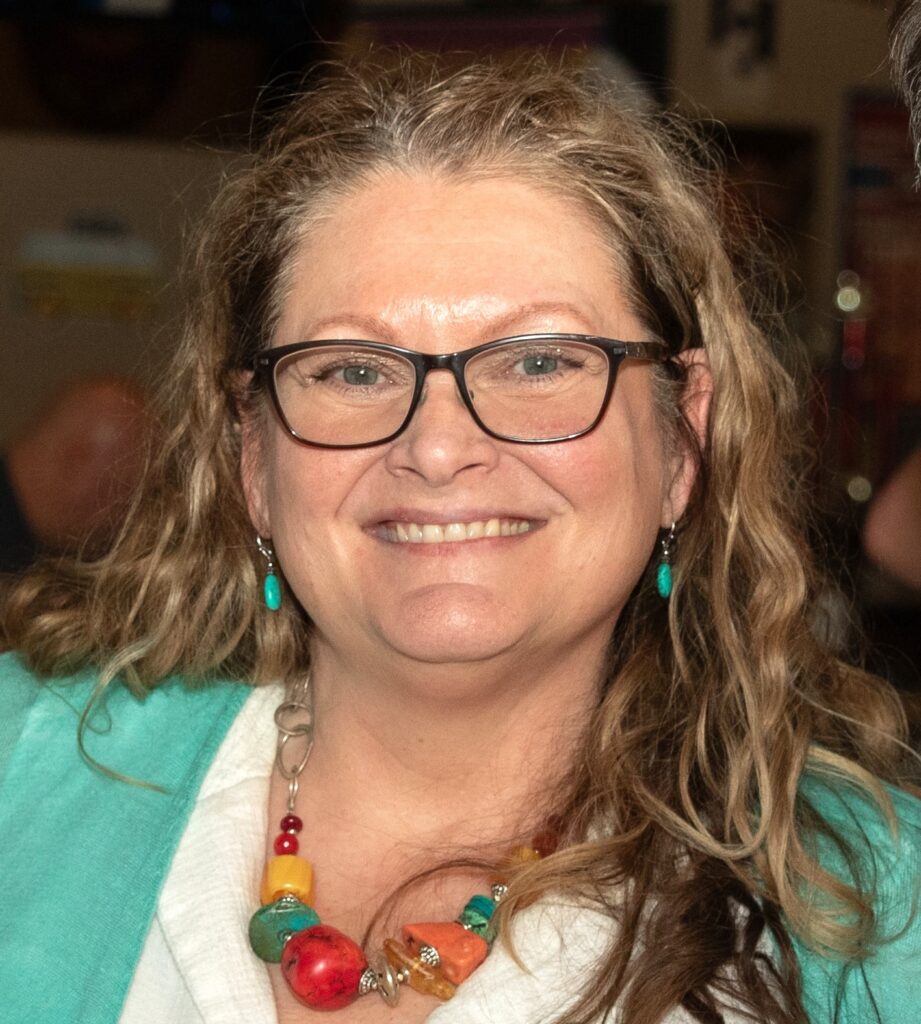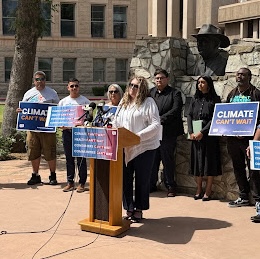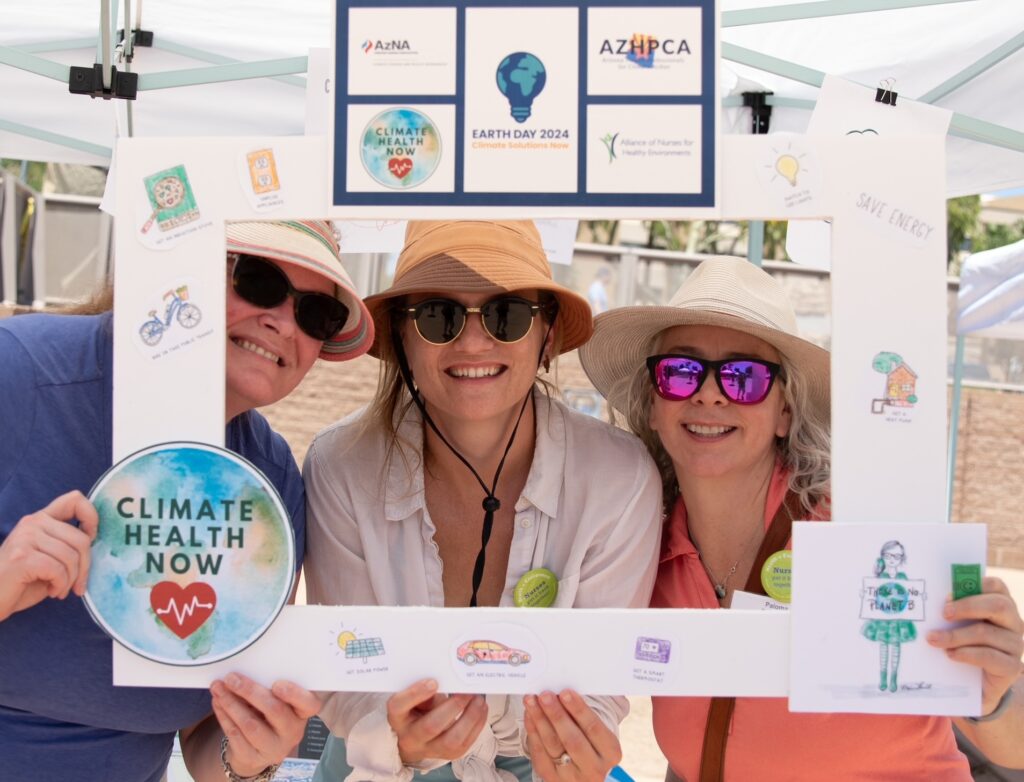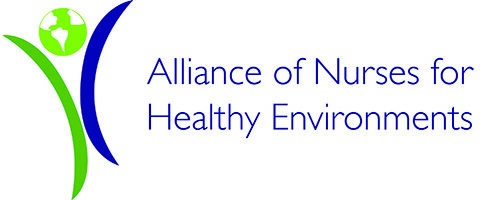Interviewee: Pat VanMaanen, MS, BSN, RN
Former Roles: Public Health Nurse, School Nurse Consultant for the Arizona Department of Education
Current Role: Chair of the Arizona Nursing Association’s Climate Change and Health Work Group (Volunteer)

Background and Initiative Overview
Pat VanMaanen’s journey into climate advocacy began during her tenure as a school nurse in Arizona, where she witnessed firsthand the escalating health impacts of deteriorating air quality and extreme heat. Recognizing the urgent need for action, she collaborated with fellow nurses to establish the Climate Change and Health Work Group under the Arizona Nursing Association. This initiative was born out of a necessity to create a structured platform where nurses could not only discuss the intersection of climate and health but also translate those conversations into tangible actions. Over the past three years, the work group has evolved into a dynamic force, addressing critical issues such as heat resilience, policy advocacy, and systemic change within healthcare institutions.
One of the group’s pivotal moments came with the passage of the Inflation Reduction Act (IRA), which provided a federal framework to connect climate action with public health. Pat and her team seized this opportunity to educate nurses and the broader community about the health implications of climate change, particularly the dangers of extreme heat. Their efforts extended beyond education, as they began collaborating with local hospitals, such as Banner Health, to integrate sustainability committees into their operations. Notably, the work group’s influence reached the state level when Pat was invited to represent nursing perspectives on Arizona’s newly formed Heat-Related Task Force, a testament to their growing impact.

The group’s work is deeply rooted in community engagement. They have been instrumental in organizing press conferences with diverse stakeholders, including Hispanic media outlets, to highlight the life-or-death importance of access to air conditioning and affordable electricity. Through these platforms, they’ve underscored how policy decisions, such as budget cuts, disproportionately affect vulnerable populations. Additionally, the work group has prioritized resource development, creating educational materials and presentations to equip nurses and community members with the knowledge to combat heat-related health risks.
Collaborators and Key Partnerships
The success of the Climate Change and Health Work Group hinges on its robust network of collaborators. Internally, the group operates under the umbrella of the Arizona Nursing Association, which provided the foundational support needed to formalize their mission. Pat’s proactive outreach through the association’s weekly newsletter attracted nurses statewide, fostering a community of like-minded professionals passionate about climate action.
Externally, the group has forged strategic partnerships to amplify its reach. The Alliance of Nurses for Healthy Environments has been a critical ally, offering resources and national perspectives on nursing-led climate initiatives. Another key collaborator, AZ Health Professionals for Climate Action, co-founded by a physician and a nurse, has provided a multidisciplinary approach to addressing sustainability in healthcare. Pat’s serendipitous meeting with one of the group’s nurse founders at a conference exemplifies the power of networking in advancing shared goals. The state chapter of the American Public Health Association has also served as a valuable platform for recruiting advocates and disseminating information.
These partnerships have enabled the work group to transcend the limitations of a volunteer-led initiative, positioning it as a credible voice in both healthcare and policy circles. By aligning with organizations that share their vision, Pat and her colleagues have been able to leverage collective expertise and resources to drive meaningful change.

Implementation and Engagement Strategies
From its inception, the work group prioritized creating a structured yet flexible framework to guide its activities. Pat’s first step was drafting a comprehensive proposal to secure approval from the Arizona Nursing Association’s board. This document outlined the group’s objectives, demonstrated the demand for such an initiative, and detailed the resources required to sustain it. By presenting a clear vision backed by evidence, Pat successfully garnered the board’s endorsement, which lent credibility and institutional support to the group’s efforts.
With the foundation in place, the work group adopted a multifaceted approach to engagement. Recognizing the power of education, they launched a book club focused on climate and health literature, fostering deeper understanding and dialogue among members. This initiative not only strengthened the group’s internal cohesion but also produced detailed book reviews published in the Arizona Nurse magazine, reaching a broader audience of licensed nurses across the state.
Advocacy has been another cornerstone of their strategy. The work group actively participates in press conferences and public forums, where they highlight the human cost of climate inaction. For instance, their media appearances have drawn attention to the plight of low-income families struggling to afford air conditioning—a preventable risk factor for heat-related illnesses. Behind the scenes, Pat and her team have worked tirelessly to integrate climate considerations into healthcare systems, collaborating with hospitals to establish sustainability committees. Their recent engagement with Banner Health’s Tucson location marks a significant step toward institutionalizing these efforts.
Challenges and Solutions
Navigating the complexities of climate advocacy within a traditional nursing association presented its share of challenges. Initially, the association’s legislative group, which focused on narrower policy issues, was hesitant to embrace environmental advocacy. This left the work group to independently shoulder the burden of lobbying for climate-related policies. Undeterred, Pat and her colleagues leaned into their role as pioneers, leveraging their expertise to educate policymakers and the public alike.
Another hurdle was the bureaucratic process required for public engagements. Each time the work group was invited to speak at an event, they needed to seek approval from the nursing association, which occasionally delayed their response times. To circumvent this, they capitalized on existing communication channels, such as their column in the Arizona Nurse magazine, to disseminate information without bureaucratic bottlenecks.
Despite these obstacles, the work group’s persistence has paid off. By focusing on issues with immediate and visible impacts—like extreme heat—they’ve been able to build momentum and demonstrate the relevance of climate action to nursing practice. Their ability to adapt and find creative solutions has been instrumental in overcoming institutional inertia.

Results and Impact
The Climate Change and Health Work Group has achieved remarkable outcomes in a relatively short time. By connecting nurses across Arizona, they’ve created a vibrant community of advocates who share knowledge, resources, and inspiration. One member’s journey from a master’s student to a full-time climate and health professional underscores the group’s role in nurturing career pathways in this emerging field.
Their educational initiatives have reached thousands of nurses through the Arizona Nurse magazine, which features their research articles and book reviews. A standout contribution is their landmark article on heat resilience, which equips nurses with practical strategies to protect patients and communities from rising temperatures.
On the policy front, the work group’s advocacy has elevated nursing voices in critical discussions, including Arizona’s Heat-Related Task Force. Their efforts have also spurred tangible changes in healthcare systems, such as the adoption of sustainability committees in hospitals. Perhaps most importantly, they’ve demonstrated that nurses can—and must—be at the forefront of climate action to safeguard public health.
Advice for Nurses Starting Similar Initiatives
Pat’s advice to nurses eager to embark on similar initiatives is both practical and inspiring. She emphasizes the importance of starting with high-visibility issues, such as heat resilience, which resonate deeply with communities and policymakers alike. “When people can feel the problem—literally, in the case of heat—they’re more likely to engage,” she notes.
Building connections is another cornerstone of her guidance. Pat encourages nurses to immerse themselves in their local nursing associations, where they can find mentors, collaborators, and institutional support. “Don’t wait for permission to get started,” she advises. “Attend climate and health events, ask questions, and learn from those who are already doing the work.”
Finally, Pat underscores the power of storytelling and visibility. Whether through writing articles, speaking at events, or participating in task forces, nurses can use their unique perspectives to humanize climate issues and drive change. “Your voice matters,” she says. “And when nurses speak up, people listen.”
Conclusion
Pat VanMaanen’s leadership exemplifies the transformative potential of nurses in the climate movement. Through her work with the Arizona Nursing Association’s Climate Change and Health Work Group, she has bridged the gap between healthcare and environmental advocacy, proving that nurses are indispensable champions for a healthier, more sustainable future. Her story serves as both a blueprint and a call to action for nurses everywhere to rise to the challenge of climate change.




